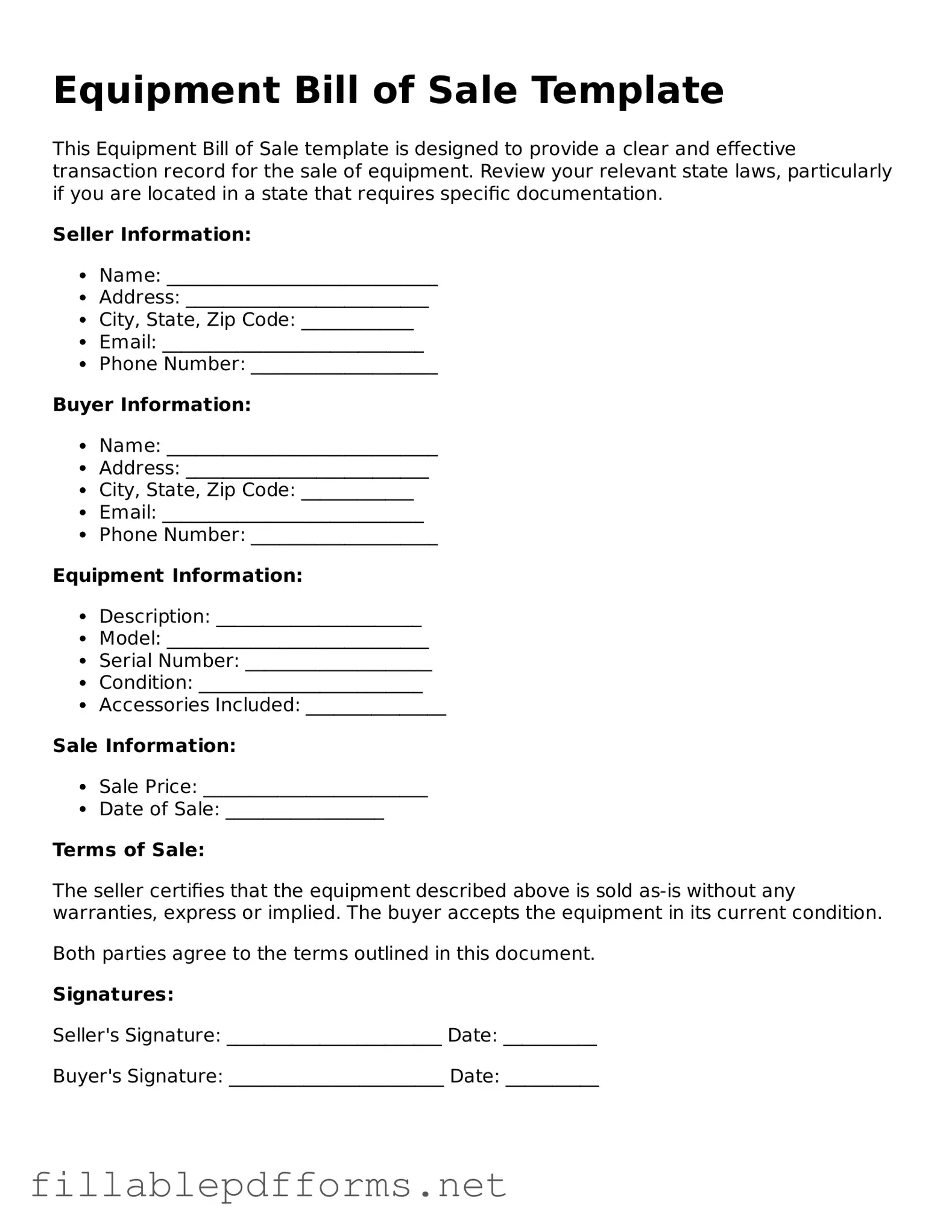The Equipment Bill of Sale form serves as a critical document in the transaction of equipment ownership, providing a clear record of the sale between the buyer and seller. This form typically includes essential details such as the names and contact information of both parties, a comprehensive description of the equipment being sold, and the sale price. It also outlines the terms of the sale, including any warranties or guarantees related to the equipment's condition. By documenting these aspects, the form helps to protect the interests of both the buyer and seller, ensuring that both parties have a mutual understanding of the transaction. Additionally, the Equipment Bill of Sale may include provisions for the transfer of title, which is vital for establishing legal ownership. This document is not only a safeguard against potential disputes but also serves as a vital record for future reference, whether for tax purposes or resale. Understanding the importance and components of this form is essential for anyone involved in the buying or selling of equipment.
